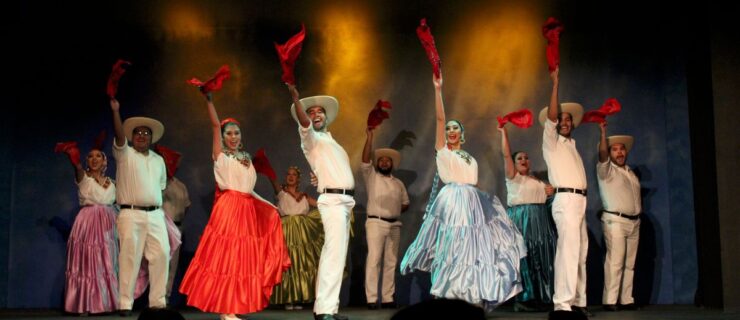The Rich Traditions of Afro-Cuban Dance
Why do you dance? Because you love it? To compete, to perform, to express yourself? In the Afro-Cuban folkloric tradition, dance is so deeply entwined with music, storytelling, and religion that almost everyone dances, and there’s almost always a reason to be dancing.
“In life, there are so many celebrations to dance about,” says Noibis Licea, an NYC-based dancer and choreographer from Bayamo, Cuba, who graduated from the National School of Arts in Havana. “Births, prayers for specific wishes like the health of someone going through surgery, protection from unexpected problems—there are dances for all those occasions and situations.” And many of these dances are all still practiced today, in Cuba and in classes around the U.S.
Moved by the Spirits
Most movement in the Afro-Cuban dance tradition comes out of the African religion known as Yoruba, which West Africans continued to practice in Cuba after they were enslaved and forced to work on the island. Practitioners of Yoruba believe that there are many different expressions of God called orixás. Each orixá symbolizes a different part of life or the world around us, and each has a characteristic movement style and “implement,” or tool.
“You use your body to indicate what’s powerful about that orixá,” explains Rosemarie Roberts, a professor of dance at Connecticut College who specializes in African diasporic dance. For example, Ochún is the deity of sweet waters, beauty, love, and destiny (among other virtues and ideas). Performing her dances, Roberts says, involves manipulating a flowing skirt while rippling the hands and upper body in the way water moves. Other main orixás to whom Yoruba believers pray by dancing are, as Licea recounts: Eleguá (“a young kid who oversees beginnings and endings”), Ogún (“a strong hunter whose arm movements suggest a machete”), Obatalá (“a knowledgeable old man who represents peace and wisdom”), and Oyá (“a female warrior who whips a horse’s tail to bring about changes”).

Licea teaching an Ailey Extension Afro-Cuban class (Joe Epstein, courtesy Licea)
Getting Technical
Because much of Afro-Cuban dance arose out of a shared West African heritage, it has a lot of qualities in common with other African diasporic danced rituals and traditions. When Roberts teaches Afro-Cuban dance to college students, she emphasizes Africanist aesthetics, like polyrhythm and polycentrism—moving different parts of the body to different drum rhythms at the same time. “You need to have a clear sense of the difference in what your feet versus upper body versus hips are doing,” she explains. “There’s also a sense of holding back or keeping your cool, even as you move freely.”
Licea says that you’ll probably recognize much of the tumbao—the proper alignment for Afro-Cuban—from modern classes you’ve already taken: “Contraction and release, translated to Afro-Cuban, is an undulation of the torso.” In your first Afro-Cuban class, remember to bend your knees deeply in parallel and lean the torso forward, keeping your weight mostly on the balls of the feet. “I always tell students to think about when you’re tying your shoes,” Licea says. “Stop halfway through the roll up and that’s the posture. Don’t forget to engage your abdominal muscles to support your back!”

Dancers performing Licea’s choreography at the 2016 World Dance Celebration Afro-Cuban performance (Christian Miles, courtesy Licea)
The Big Picture
Roberts says that traditional Afro-Cuban dance is just one square in a larger quilt of African diasporic dance—i.e., dances that began in Africa but have changed over centuries and across continents. “Each Caribbean island has its own arts, history, cultural and social norms, and language,” she says, “and each island was also influenced by where its people originated.” For example, many Haitians settled in eastern Cuba, so the dances of that region are different from those in Havana (the capital city).
In its turn, aspects of Afro-Cuban dance have influenced dance on the island and around the world. “Técnica de la danza cubana (Cuban modern dance technique), which was codified to be taught in Cuba’s National School of the Arts starting in 1961, is derived in large part from Afro-Cuban dance and Afro-Cuban rhythms,” Licea says. And it’s not just modern: “Afro-Cuban’s rapid transitions and the tumbao can be seen in all other forms of social dance: hip hop, rumba, mambo, cha-cha, et cetera,” Roberts says.
Afro-Cuban dance is still relevant today. “Someone sent me a video recently of a popular song that talks about the different orixás,” Roberts says. “There’s a lot of fluidity between the dances and ‘real life,’ because these spiritual and religious traditions are so much a part of Cuban daily life—for men and women, the old and the young.”




